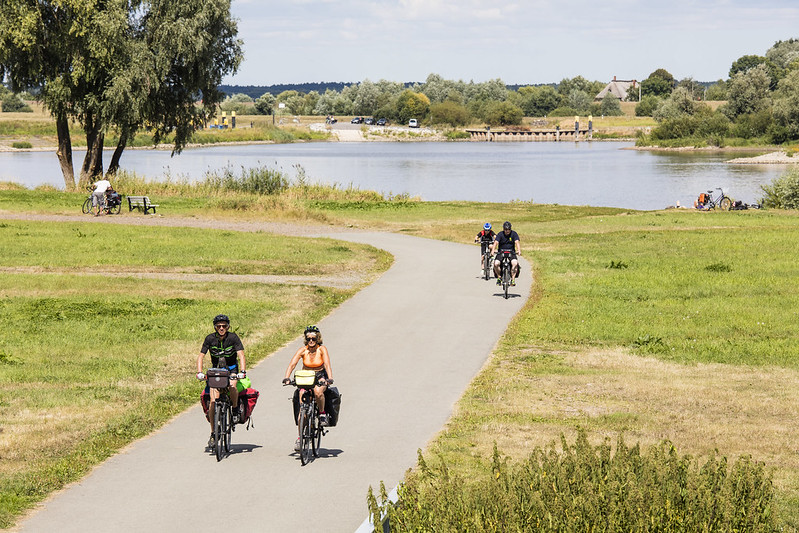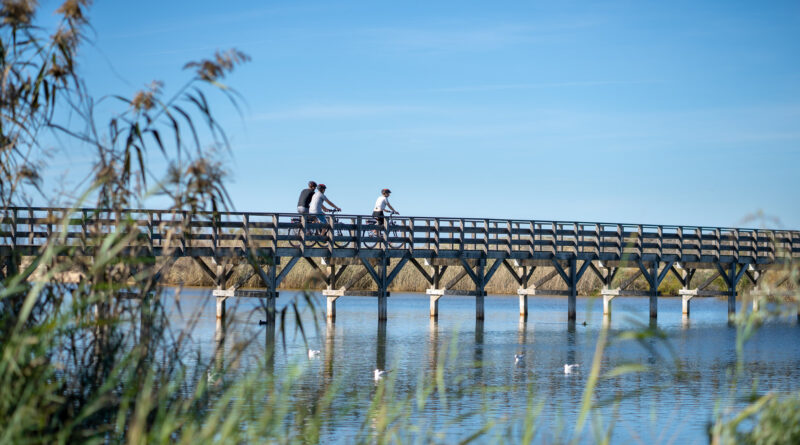Discovering Europe by bike on the EuroVelo routes
As an increasing number of people around the world are discovering the joys and benefits of cycling, cycle holidays are likely to attract a lot of attention this summer. Did you know that there is a network of 16 long distance cycle routes that cross and connect the whole European continent?
EuroVelo, the European cycle route network, is the biggest initiative of its kind in the world. Developed and coordinated by the European Cyclists’ Federation (ECF), it incorporates existing and planned national and regional cycle routes into a single European network.
The 12 initial cycle routes were launched back in 1997 and EuroVelo was first managed by the ECF, Sustrans (cycling charity in the UK) and Foreningen Frie Fugle (Denmark).
The routes can be used by long-distance cycle tourists, as well as by local people making daily journeys. The 16 EuroVelo routes, crossing 36 countries and totalling almost 90,000 kilometres, are each arranged according to a theme and given an even or odd route number depending on their direction:
- EuroVelo 1 – Atlantic Coast Route (North Cape to Sagres)
- EuroVelo 2 – Capitals Route (Galway to Moscow)
- EuroVelo 3 – Pilgrims Route (Trondheim to Santiago de Compostela)
- EuroVelo 4 – Central Europe Route (Roscoff to Kiev)
- EuroVelo 5 – Via Romea Francigena (London to Rome and Brindisi)
- EuroVelo 6 – Atlantic-Black Sea (Nantes to Constanta)
- EuroVelo 7 – Sun Route (North Cape to Malta)
- EuroVelo 8 – Mediterranean Route (Cadiz to Cyprus)
- EuroVelo 9 – Baltic-Adriatic (Gdansk to Pula)
- EuroVelo 10 – Baltic Sea Cycle Route (Hansa Circuit)
- EuroVelo 11 – East Europe Route (North Cape to Athens)
- EuroVelo 12 – North Sea Cycle Route (North Circuit)
- EuroVelo 13 – Iron Curtain Trail (Barents Sea to Black Sea)
- EuroVelo 15 – Rhine Cycle Route (Andermatt to Hoek van Holland)
- EuroVelo 17 – Rhone Cycle Route (Andermatt to Mediterranean Sea)
- EuroVelo 19 – Meuse Cycle Route (Langres to Hoek van Holland)

The EuroVelo routes cross many UNESCO World Heritage Sites and other places of natural, historical and cultural significance, highlighted on the EuroVelo website and the EuroVelo apps.
For example, EuroVelo 3 – Pilgrims Route brings cyclists along historical pilgrimage routes, visiting no less than 20 UNESCO sites including the Cologne Cathedral, mines and belfries of Belgium, the Loire Valley and the Old Town of Santiago. EuroVelo 13 – Iron Curtain Trail meanwhile allows users to experience the history of the Iron Curtain, as well as a great variety of natural landscapes along the European Green Belt.
Some of the most popular EuroVelo routes follow major European rivers. EuroVelo 15 goes along the Rhine, visiting the Rhine falls in Switzerland and the lovely Kinderdijk Windmills in the Netherlands. This route has been re-certified in 2019, guaranteeing it is a high-quality route, with significant sections suitable for cyclists of all fitness levels and abilities.
EuroVelo 19 follows the Meuse River, offering an ever-changing scenery with charming towns and villages on both banks of the river, until the city of Rotterdam. And EuroVelo 6, going along the Loire, the Rhine and the Danube, is highly popular because it combines the flatness of a river route with the diversity of the countries it crosses. This route leads from the French vineyards to Vienna’s famous museums, the Bulgarian Danube Delta and all the way to the Black Sea Coast in Romania.
Maritime heritage also makes a big part of the EuroVelo network. EuroVelo 1, the longest EuroVelo route, explores the Atlantic coastline from North Cape in Norway to the sun-kissed beaches of Portugal, following Europe’s mighty western border. The Atlantic Coast Route visits the majestic fjords of Norway, the wild Irish coastline, the rough cliffs of Brittany and the ancient Via de la Plata route in Spain.

EuroVelo 8 follows the Mediterranean Coast and its sparkling emerald seas all the way to Cyprus, bringing cyclists to experience Gaudi’s mind blowing architecture in Barcelona, the romance of Venice’s canals and Dubrovnik’s old town.
The EuroVelo network also comprises two closed circuits along the Baltic Sea (EuroVelo 10) and the North Sea (EuroVelo 12).
Since 2007, the EuroVelo network is managed by the ECF in cooperation with a network of 23 National Coordination Centres and Coordinators (NECC/Cs) and various project partners. The NECC/Cs insure the implementation, operation and quality assurance of EuroVelo at a national level. The financing of EuroVelo projects at the national or regional level is through European institutions (e.g. via Interreg projects), national and regional government bodies and the private sector.
EuroVelo routes can also be the stage for adventurous, original and sometimes crazy journeys, such as Myra Stals’ Cycle 2 Recycle adventure. The Dutch cyclist and environmental activist covered 2,000 km through six different countries to make a statement against plastic pollution by picking up as much plastic waste as possible while she was on her bike tour. She managed to pick up a whopping 43 kg of plastic waste in her (non-electric) cargo bike, crossing the Swiss Alps twice! She shared her story on the EuroVelo website, where inspirational cycling stories happening on the EuroVelo network are regularly published.
Florence Grégoire, European Cyclists’ Federation
For more information, visit the EuroVelo website or follow the initiative on Facebook, Twitter and Instagram. You can also join the community on the EuroVelo Discussion Group to plan your next cycling trip on the EuroVelo network with fellow cycling enthusiasts.
Photo courtesy EuroVelo © all rights reserved.





